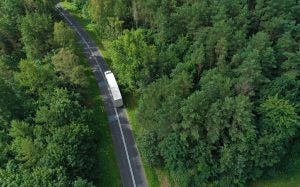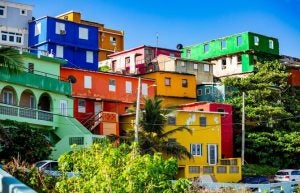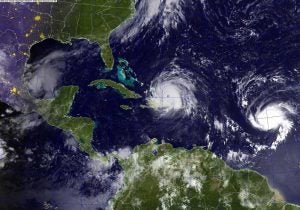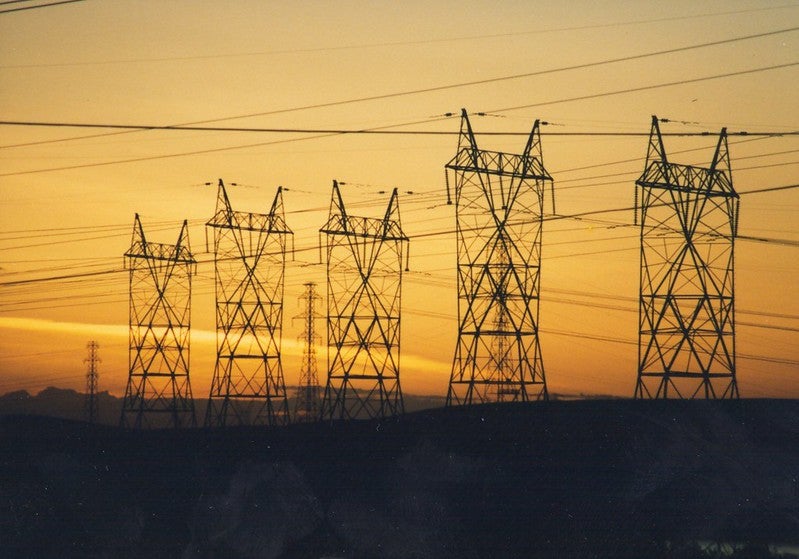Fleets across the country are going electric and utilities and regulators must be prepared for this essential transition. New York is currently taking on an ambitious medium- and heavy-duty electric vehicle proceeding to address barriers to charging infrastructure and has just conducted a series of technical workshops that brought together fleets, utilities and experts, including Environmental Defense Fund, to share their knowledge, recommendations and needs with the New York Public Service Commission.
Energy Exchange
Widespread expansion of zero-emission fleets requires proactive grid upgrades – New York can set the stage
The power grid and disinformation
 Texans know better than to believe the lies. But, whenever severe weather strikes the state and the isolated electric grid is imperiled, they’re always fed them: “Green energy” is offered up as the ultimate scapegoat, facts be damned.
Texans know better than to believe the lies. But, whenever severe weather strikes the state and the isolated electric grid is imperiled, they’re always fed them: “Green energy” is offered up as the ultimate scapegoat, facts be damned.
4 things every utility, fleet and energy regulator should know about heavy-duty truck charging
 The transition to electric heavy-duty trucks is upon us, sparked by a steady decline in battery costs, continuous improvements in electric truck and charging technology, and growing recognition of the climate and local air quality impact of diesel trucks. But even as household names like FedEx, PepsiCo and Amazon have made public pledges to electrify their truck fleets, concerns that charging infrastructure will be able to meet fleets’ needs cost effectively threaten to slow the market-wide transition.
The transition to electric heavy-duty trucks is upon us, sparked by a steady decline in battery costs, continuous improvements in electric truck and charging technology, and growing recognition of the climate and local air quality impact of diesel trucks. But even as household names like FedEx, PepsiCo and Amazon have made public pledges to electrify their truck fleets, concerns that charging infrastructure will be able to meet fleets’ needs cost effectively threaten to slow the market-wide transition.
A study commissioned by EDF and conducted by Gladstein, Neandross and Associates addresses these charging questions and provides a pathway to ensuring heavy duty trucks can electrify.
Puerto Rico can achieve reliable and equitable clean energy. Here’s what it’ll take.
 By Fred Krupp and Ramón Cruz, Sierra Club President
By Fred Krupp and Ramón Cruz, Sierra Club President
Puerto Rico sits in the eye of what’s been the busiest hurricane season on record with an old and historically unreliable power system. The all too common occurrence of blackouts left more than 400,000 people in San Juan in the dark hours before Tropical Storm Isaias made landfall on the U.S. territory this week. Isaias is the latest storm to test Puerto Rico’s preparedness after Hurricane Maria tore apart its electric grid in 2017.
Lack of funding to rebuild critical infrastructure and the Trump administration’s ongoing neglect have elevated the risk that unimaginable human suffering awaits with the next storm.
Puerto Rico puede tener energía limpia, fiable y equitativa. Se requiere lo siguiente.
Por Fred Krupp y Ramón Cruz, presidente de Sierra Club
Puerto Rico se encuentra en el medio de lo que ha sido la temporada de huracanes más activa de la que se tiene registro y la enfrenta con un sistema de energía eléctrica antiguo y poco fiable. Los apagones, cada vez más frecuentes, dejaron a más de 400.000 personas a oscuras antes de que la tormenta tropical Isaías tocara tierra en el territorio estadounidense la semana pasada. Isaías es la última tormenta que ha puesto a prueba la preparación de Puerto Rico después de que el huracán María destrozara su red eléctrica en el 2017.
Resilience in the eye of the storm: how Puerto Rico can build a stronger, more sustainable energy future
 By Agustín Carbó and Amalia Saladrigas
By Agustín Carbó and Amalia Saladrigas
The Atlantic hurricane season is under way and scientists predict it will be one of the strongest in recent memory, as climate change makes more frequent and severe storms the new normal. For communities across Puerto Rico, already battered by an array of crises, the need to plot a more resilient future is urgent.
Energy is a critical lifeline for Puerto Ricans, and residents’ health and well-being depend on a stable and reliable source of power. Previous disasters, from hurricanes to earthquakes, have shown how unreliable and fragile the current centralized energy system is.
Now, the archipelago has an opportunity to reimagine its electric infrastructure in a way that puts communities first with more sustainable and resilient solutions.










